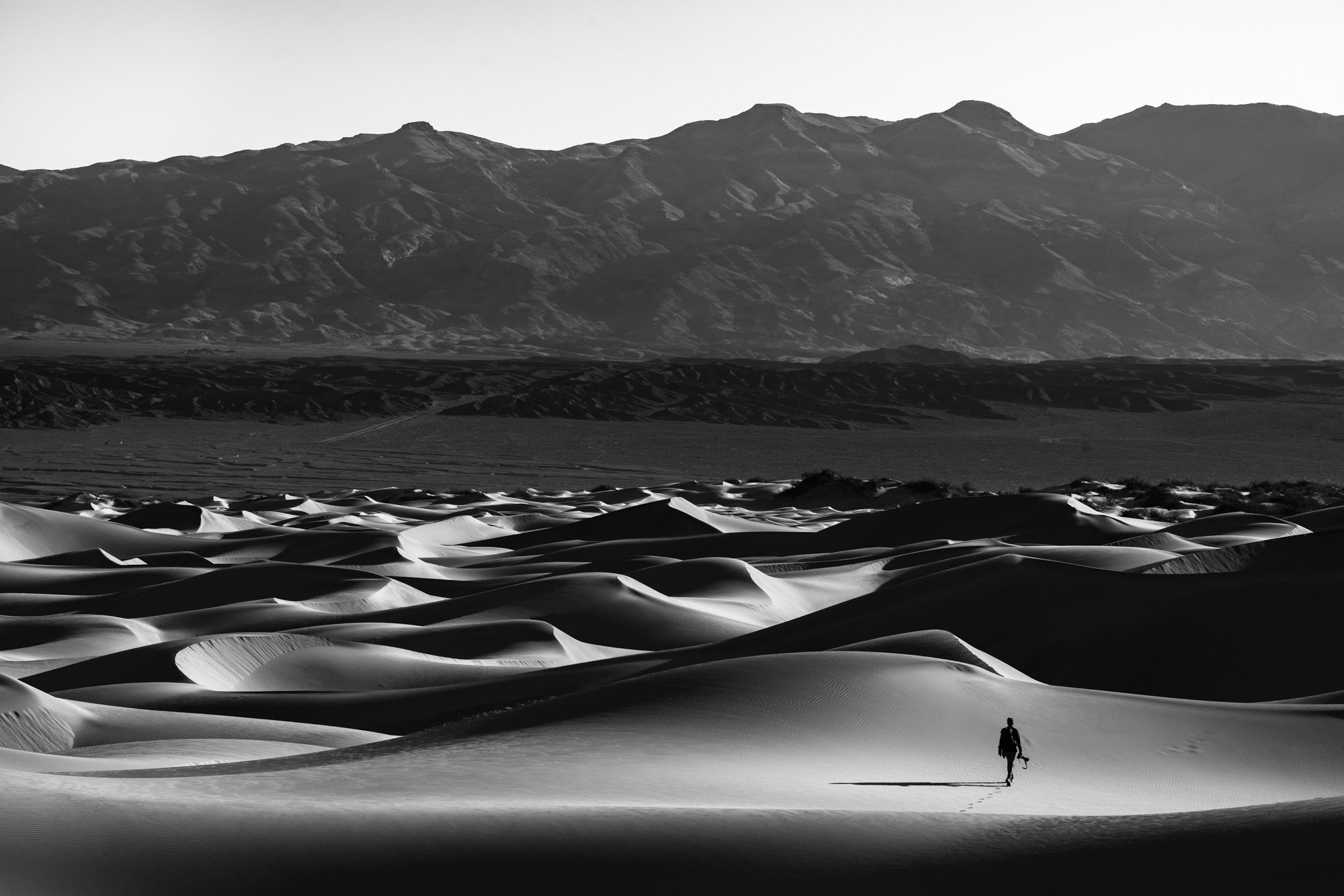The Sound and Silence of Inspiration: What Fuels My Fine Art Photography
“What speaks to me most in their work is their invitation to feel rather than interpret. That’s what I hope viewers experience with my photographs. I’m not documenting a location—I’m offering a state of mind, a space for reflection, a kind of visual score that unfolds slowly.”
As a fine art photographer, my work is often described as minimalist, ethereal, and emotionally immersive. But behind each long-exposure landscape lies a current of inspiration drawn from seemingly unrelated disciplines—classical music, cinematic scores, and abstract expressionist painting. These influences are not just background noise; they shape how I see, compose, and ultimately share the world through black-and-white photography.
Designing in Two Dimensions: Architecture as a Visual Foundation
Before returning fully to photography, I spent years working in landscape architecture and urban design. That training never left me—it informs everything I do. When I photograph a coastal horizon or a jagged cliff, I’m not just chasing light; I’m shaping space.
Much like designing a plaza or a building interior, I consider how the viewer moves through the frame. Where does the eye go first? How does it rest or travel? How are the elements weighted against each other?
Negative space becomes void. A tree or waterfall acts as structure. A distant mountain reads like a massing element in elevation. I'm still designing—just with light and shadow instead of concrete and steel.
Each image is a kind of architectural rendering, not in a literal sense, but as a space to enter and dwell within emotionally. I am always thinking in terms of structure, harmony, and intentional restraint.
The Cinematic Influence: Christopher Nolan and the Architecture of Time
I often return to the films of Christopher Nolan—not just for their visual precision but for their treatment of time. In Interstellar, Inception, and Dunkirk, time is stretched, folded, fragmented. That manipulation of time mirrors what I attempt to do with a camera: slow down perception, stretch a moment, and ask viewers to sit with it.
Nolan’s work also embraces scale—monumental yet intimate, cerebral yet deeply human. That duality inspires me to shoot not just landscapes, but emotional terrains. When I compose a photograph, I’m not just documenting a location. I’m constructing a quiet, visual architecture that slows down the viewer’s eye and invites introspection.
The Soundtrack of Stillness: Hans Zimmer and Classical Scores
While editing or even scouting locations, I frequently listen to Hans Zimmer, Arvo Pärt, or Max Richter. Their scores are full of emotional undertow—layered, minimalist, often melancholic. Zimmer’s compositions in particular walk a tightrope between grandeur and intimacy, which parallels my own work with natural subjects like waterfalls, coastlines, and rock faces.
Music like this doesn’t just provide atmosphere. It informs the tonal range of my photographs. The silence between piano notes becomes visual space between rocks. A swelling cello might inspire how I shape a tonal gradient from sky to earth. The relationship is synesthetic—sound becomes sight.
Abstract Expressionism: The Color Fields of Emotion
While my photography is monochromatic, I am deeply influenced by abstract expressionist painters, especially Ad Reinhardt and Mark Rothko. Reinhardt’s black paintings—seemingly uniform but layered with nuance—mirror my own pursuit of subtlety in shadow. Rothko’s floating fields of color offer an emotional presence I try to emulate with light and form.
What speaks to me most in their work is their invitation to feel rather than interpret. That’s what I hope viewers experience with my photographs. I’m not documenting a location—I’m offering a state of mind, a space for reflection, a kind of visual score that unfolds slowly.
Why This Matters to Collectors and Viewers
Understanding the sources of inspiration behind my work offers a deeper appreciation for each piece. Whether you’re a collector, curator, or simply someone drawn to meditative, minimalist art, these cross-disciplinary influences enrich the meaning behind each image. My landscapes are not just representations of nature—they are shaped by sound, story, and silence.
If you're looking for fine art photography that balances emotional depth, minimalist design, and timeless composition, you're in the right place. My portfolio reflects a lifetime of listening—to landscapes, to music, and to the visual rhythms of great art.

